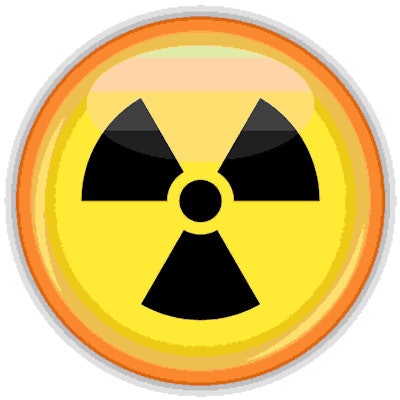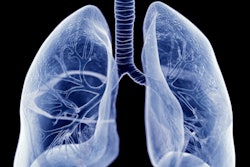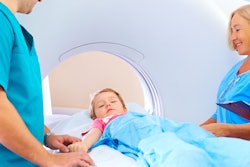
Academic pediatric facilities used about half the radiation dose that other U.S. medical facilities used for pediatric CT scans of the chest, abdomen-pelvis, and brain -- with significantly less variation in dose, according to an article published online February 5 in Radiology.
In a new study, researchers from Ohio and Pennsylvania evaluated the CT radiation dose data submitted by 519 medical facilities to the American College of Radiology (ACR) Dose Index Registry between January 2016 and December 2017. Their aim was to identify disparities in CT dose at different types of healthcare institutions, which they divided into four categories: academic pediatric, nonacademic pediatric, academic adult, and nonacademic adult facilities.
Numerous groups have made recommendations and launched initiatives to address concerns over CT radiation exposure in children, wrote corresponding author Keith Strauss from Cincinnati Children's Hospital Medical Center and colleagues. Despite these efforts, clinicians continue to report wide variation in CT dose levels and the need for improvement in managing pediatric CT dose.
For their analysis, Strauss and colleagues categorized CT radiation dose data at the four types of facilities into distinct size groupings based on the diameter of the patient anatomy exposed to radiation (e.g., 0-14.5 cm, 14.5-18 cm). They focused on brain CT, chest CT, and contrast-enhanced abdomen-pelvis CT exams.
Overall, the researchers found that academic pediatric facilities used as little as half the CT radiation dose needed to evaluate patients with the same-sized target anatomy at adult or nonacademic pediatric facilities, depending on the type of exam. Among the four kinds of facilities, academic pediatric centers reported the lowest CT radiation dose for all brain CT exams, 78% of chest CT exams, and 89% of contrast-enhanced abdomen-pelvis CT exams across all size groups.
| CT radiation dose by type of medical facility | ||||
| Nonacademic adult | Academic adult | Nonacademic pediatric | Academic pediatric | |
| Chest (18-22 cm) | ||||
| CT dose index volume (mGy) | 2.9 | 2.6 | 2.8 | 1.5 |
| Size-specific dose (mGy) | 5.2 | 4.7 | 5 | 2.6 |
| Abdomen-pelvis (14.5-18 cm) | ||||
| CT dose index volume (mGy) | 4.1 | 2.7 | 2.7 | 1.8 |
| Size-specific dose (mGy) | 8.3 | 5.5 | 5.4 | 3.6 |
| Brain (14-15.5 cm) | ||||
| CT dose index volume (mGy) | 39.1 | 37 | 33.6 | 23.3 |
Furthermore, the researchers discovered that the variation in CT radiation dose was lower by a statistically significant degree at academic pediatric centers for all brain CT, 96% of chest CT, and 94% of abdomen-pelvis CT exams, compared with the variation present at other facilities (p < 0.01).
With these data in hand, how could healthcare institutions move toward lowering CT radiation dose and minimizing variation?
In an accompanying editorial, Dr. Peter Strouse from the University of Michigan suggested several possible measures for individual facilities:
- Establish a team of radiologists, CT technologists, and medical physicists that will compare CT dose indexes to national standards as well as review and refine protocols.
- Continue to research ways to improve CT image quality and dose optimization.
- Participate in the ACR Dose Index Registry. (At the time of the study, only 29 out of 250 pediatric hospitals on the Children's Hospital Association list provided data.)
- Share CT scanning protocols openly with other institutions.
"It is the duty of academic pediatric facilities to take the lead and to assist other facilities with dose management," Strouse wrote. "Taking it one step further, pediatric facilities should consider providing active feedback to other facilities who fail to practice good radiation dose management at CT."




















